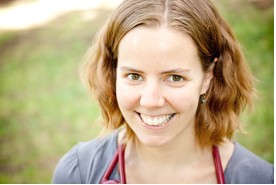 Anyone who has ever eaten a raw garlic clove knows the power of this medicine. The stuff within garlic that gives you the stinky breathe is called allicin, its most potent chemical component. Allicin contains a sulfur compound, which may cause you to be unpopular to kiss, but makes it very potent medicine. In fact, it can protect you from getting high blood pressure, diabetes and liver disease. Garlic also reduces inflammation in your body and protects you from infections. Excuse me if I go on and on about this herb, but really I hope you will get the point garlic really is amazing.
Anyone who has ever eaten a raw garlic clove knows the power of this medicine. The stuff within garlic that gives you the stinky breathe is called allicin, its most potent chemical component. Allicin contains a sulfur compound, which may cause you to be unpopular to kiss, but makes it very potent medicine. In fact, it can protect you from getting high blood pressure, diabetes and liver disease. Garlic also reduces inflammation in your body and protects you from infections. Excuse me if I go on and on about this herb, but really I hope you will get the point garlic really is amazing.
Garlic is especially known as an herb for your entire cardiovascular system – your arteries, veins, capillaries and heart. When taken daily, it can reduce the plaque that builds up on your blood vessels, allowing more blood to your hands and feet and reducing your overall blood pressure. It does this by strengthening your blood vessel walls, decreasing your LDL -“bad”- cholesterol, the guy who deposits buildup on your vessels and increasing your HDL –“good”- cholesterol, the guy who takes the buildup back from your vessels to your liver so it can be destroyed. It also decreases your overall triglyceride levels, reducing your overall risk of heart disease.
Garlic is a very powerful immune booster. It is antibacterial, antiviral and anti-fungal. Therefore, it can take care of almost any bug or overgrowth you get! It is commonly used for yeast infections but can be used for so much more including any kind of upper respiratory issue (bronchitis, colds, flu, sinus infections, etc) or gastrointestinal issues (ulcers, parasites) and more.
Garlic also protects you from type 2 diabetes or can be a great help for someone already diagnosed with diabetes because it helps reduce sugar in the blood. Less sugar causes less insulin to be released, therefore allowing your cells to better process the sugar that is already there. It should be used under the supervision of a physician if you have “brittle diabetes” or easily become hypoglycemic.
There are a few other people who should be careful with garlic, such as those with acute inflammation, insomnia, dehydration, organ transplants or if you are taking an anticoagulant. It also should not be used by people who have a hot constitution – a red face, sweat easily, feel warm to touch, prone to headaches and anger easily, etc.
To be honest, the best way to take it is to shoot it straight up, raw and in all of its glory, 1-2 cloves/day. However, I know that many people may have issues (such as you want to still have friends) so therefore try use it in your cooking whenever possible, but keep it raw whenever possible. There are also supplements that are available from naturopathic physicians and some health food markets – try to take these only under the supervision of a licensed practitioner.
DAIRYFREE GARLIC PESTO: By Jill Stansbury, ND
Pesto traditionally contains parmesan cheese and is an excellent complementing flavor when desired. In order to make a pesto of medicinal quality the following recipe without dairy products will work. The traditional recipe also uses fresh basil. Wonderful pestos may be made from other fresh herbs including cilantro, mint, lemon thyme, lemon verbana, and arugala.
Peel all of the individual cloves in 3-5 full bulbs of garlic and place in a food processor.
Tear 5 large handfuls of Basil into the food processor.
Cover with olive or flax oil and puree.
Add 1 cup of pine nuts and blend again.
Use as a spread on toast or cracker, on pasta, and to make salad dressings and sauces.
Store in the refrigerator.
GARLIC SOUP FOR COLDS AND FLUS
8 Cups water
2-3 tbl Miso paste (a salty fermented soybean product available in health food stores)
3 carrots, sliced
1 white onion, chopped
2 tbl grated ginger root
1 bunch kale, washed and shredded
All the cloves of 1 bulb of garlic, peeled and crushed
Place the carrots, onion and miso in the water and bring to a low simmer. Continue simmering until onions are translucent and carrots are beginning to get soft. Add the garlic and the kale, reduce heat to the lowest possible setting and keep soup warm for another full hour. Use the soup as the main source of nutrition for a day, eating very sparsely other wise.




